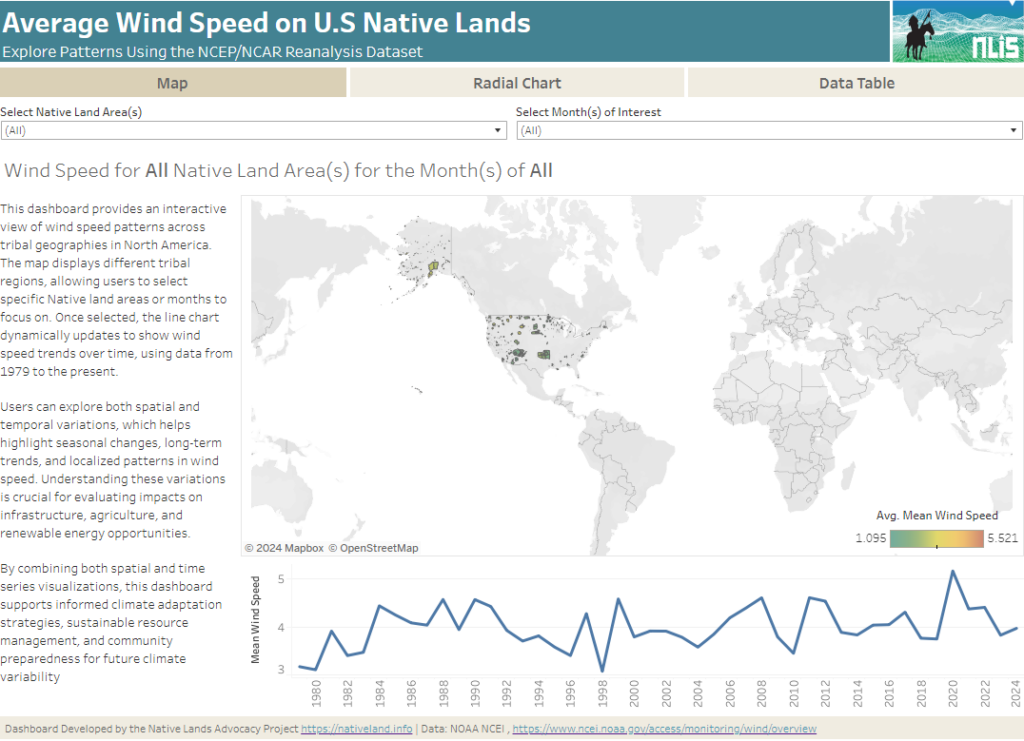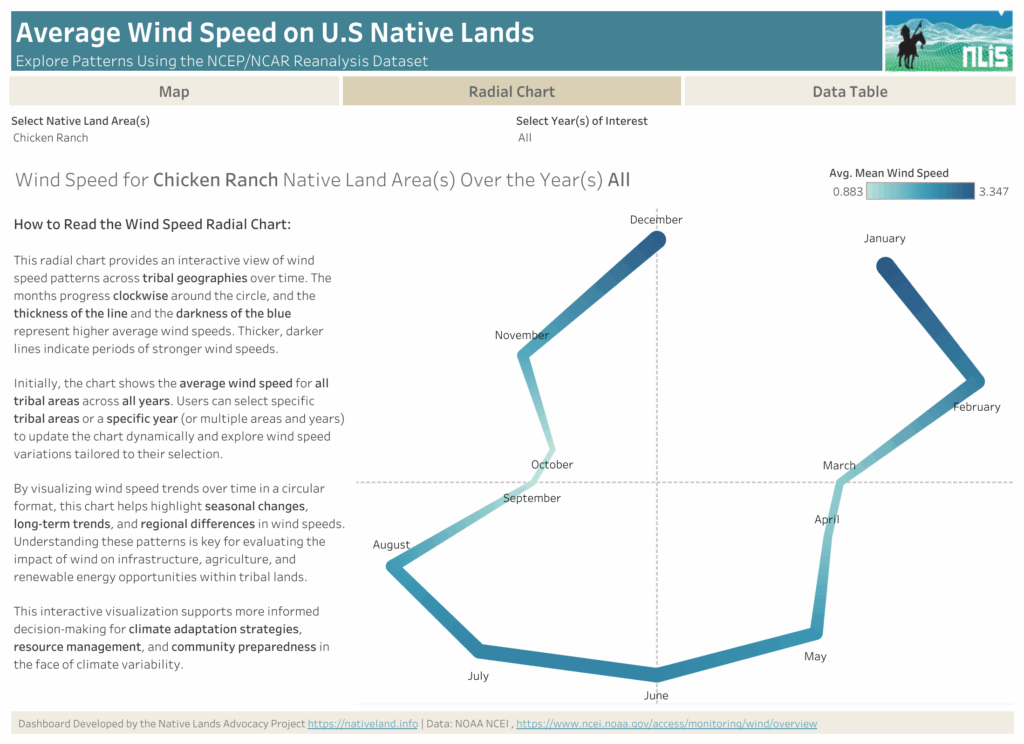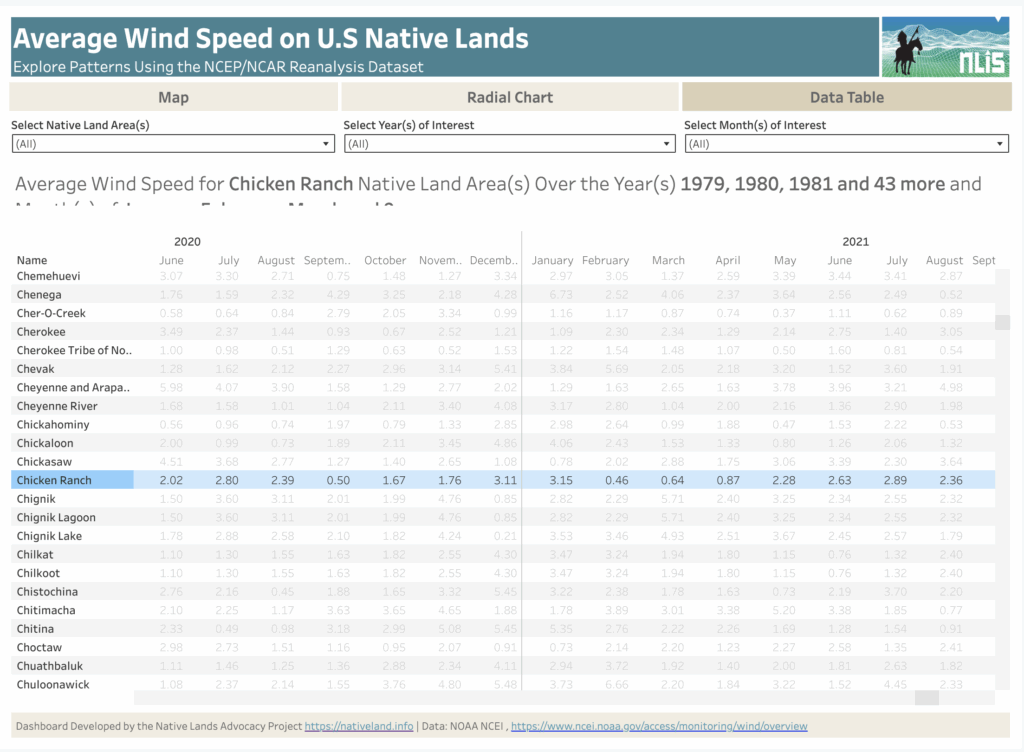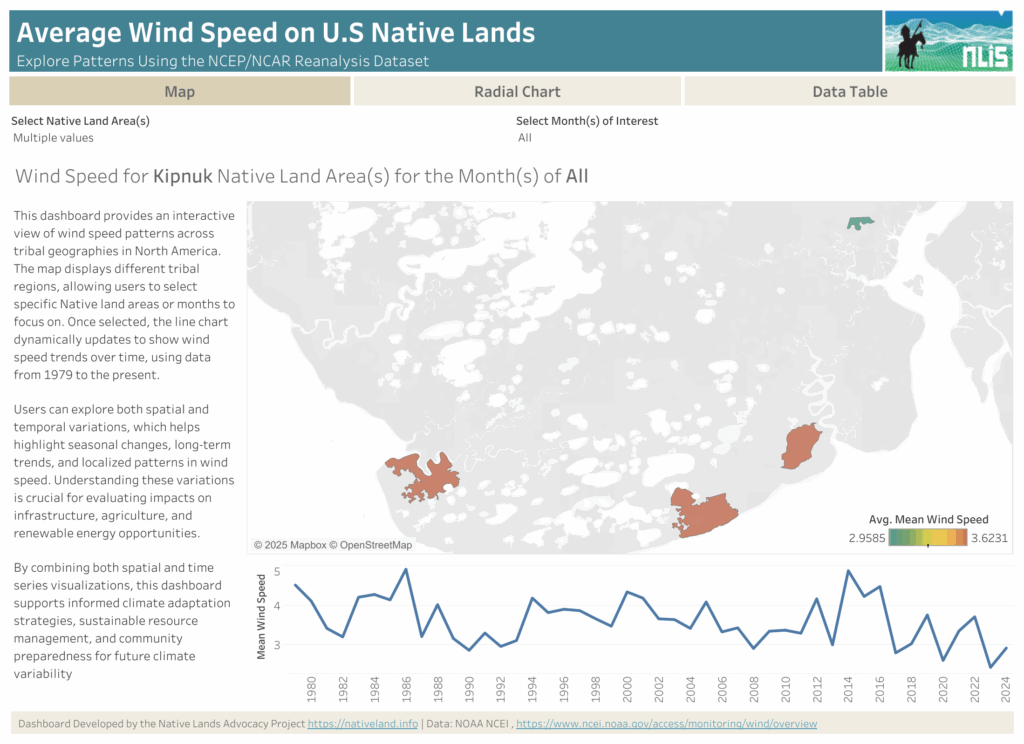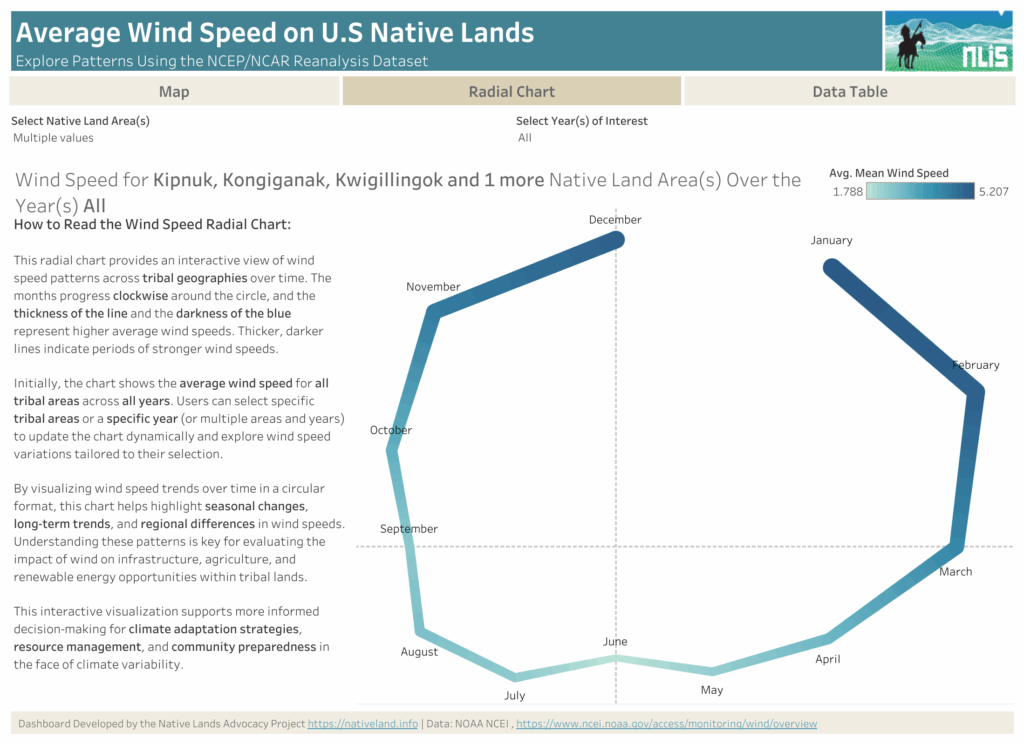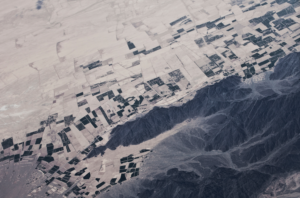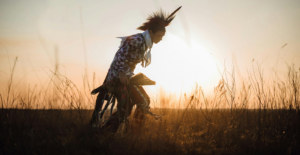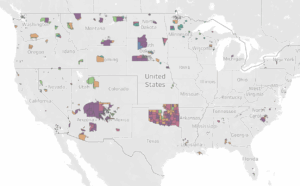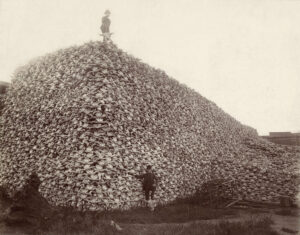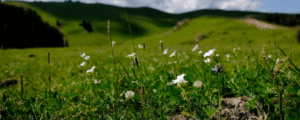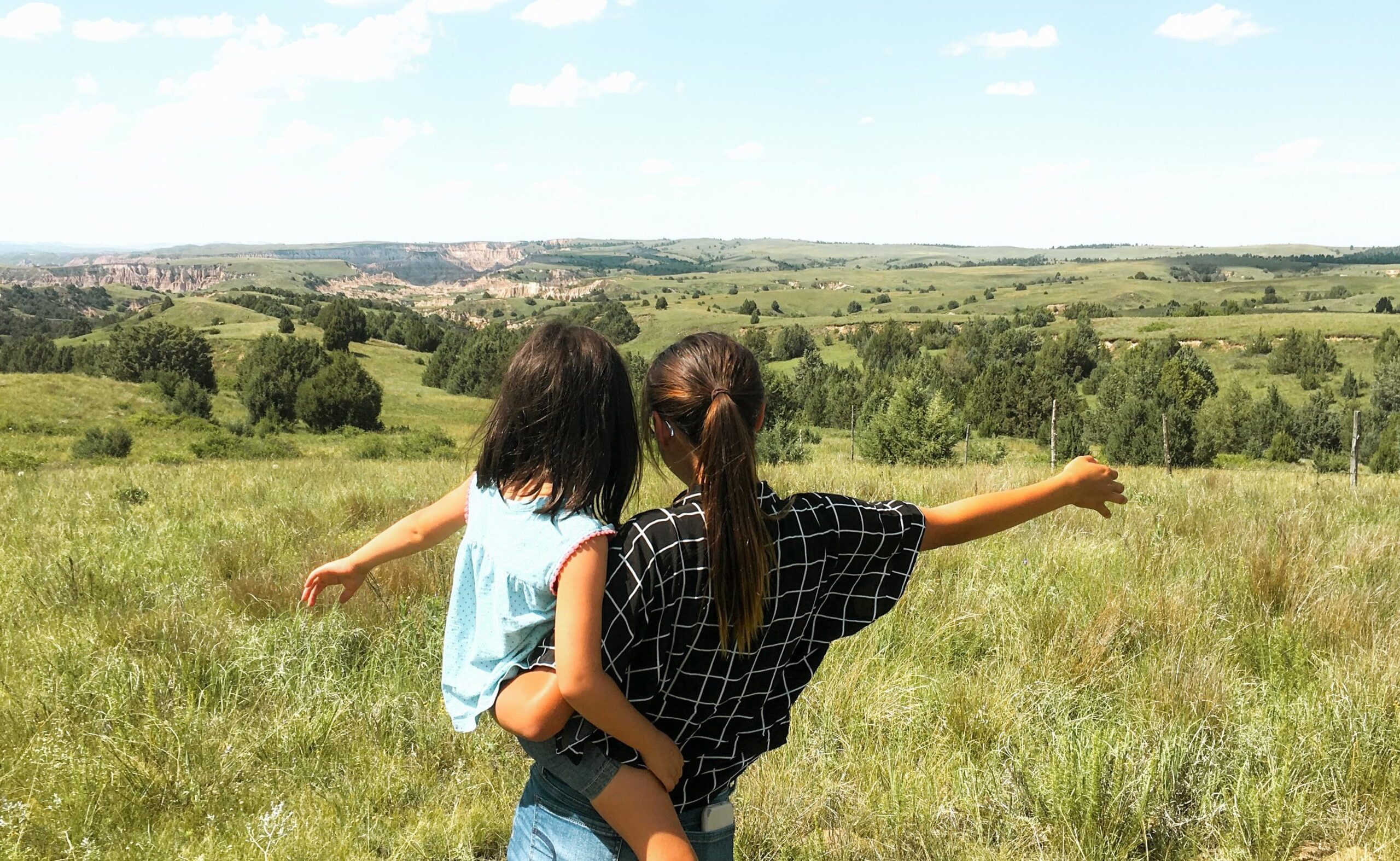Wind plays a significant role in shaping ecosystems, affecting infrastructure planning, and in overall renewable energy potential. Recognizing this, the Native Lands Advocacy Project (NLAP) developed an Average Wind Speed data dashboard as part of our Climate Data Portal for U.S. Native Lands. Read on to learn more about this dashboard and explore two potential uses for wind speed data on Native lands.
This data dashboard is built using wind speed data from the NCEP/NCAR Reanalysis dataset, which provides detailed information on wind speed and direction. The wind speed data comes from the U.S. Wind Climatology – Monthly dataset, which offers average monthly wind speeds for the contiguous United States from 1979 to the present. The dashboard presents the average wind speeds, calculated by combining the U-wind (east-west component) and V-wind (north-south component) data.
In this dashboard, NLAP contextualizes this wind speed data for tribal lands, allowing users to analyze wind patterns specific to Native geographies.
Potential Uses for Wind Speed Data
Agricultural Planning
Wind is important for agriculture—it assists in the pollination and reproduction of plants, circulates CO2 through the atmosphere, and can contribute to pest management. However, strong winds pose challenges to agricultural production by eroding soil (leading to diminished soil quality), damaging crops, and even acting as a stressor on livestock health. Using tools like this Average Wind Speeds on U.S. Native Lands dashboard, Native agriculture producers can assess trends in wind speed—especially changes in recent years—to plan for mitigation strategies that protect their crop yields and livestock health.
The dashboard’s radial chart (shown on the left; click to view) allows users to explore monthly trends in wind speed on their Native lands during any year(s) between 1979 and 2024. The table (shown on the right; click to view) allows users to explore the data directly. These visualizations allows users to compare between months and years and assess whether average wind speeds are significantly changing on their lands.
Renewable Energy Production
As tribes increasingly seek sovereign energy futures, renewable energy sources such as wind are being considered as supplementations to, or replacements of, traditional fossil fuels. Using this dashboard, tribes can analyze wind energy data from 1979 to the present and compare monthly/seasonal trends to assess whether wind energy may be a viable avenue for them.
Take, for example, the Chaninik Wind Group in Alaska (composed of the Kongiganak, Kwigillingok, Tuntutuliak, and Kipnuk villages). Like many Alaska communities, these villages have historically run on diesel-burning generators and struggle with high energy costs—in a given year, diesel may make up nearly half of their overall budgets (Goldfuss, 2012). Yet their wind resources are abundant, especially in colder months, when air is denser and thus ideal for generating wind energy.
These four villages pioneered a wind turbine project in their region aimed at “reduc[ing] dependency on diesel fuel, lower[ing] energy costs and foster[ing] opportunities for economic development in their communities” (Chaninik Wind Group – 2010 Project, n.d.).
Tribes can use tools like this Average Wind Speeds on U.S. Native Lands dashboard to assess their own wind resources and their potential for renewable energy production.
Ground Truthing Data
As always, NLAP recognizes that Native communities have the best on-the-ground understanding of their lands and weather patterns. By producing free, open-access data tools like this Average Wind Speed dashboard, we aim to put years of valuable data into the hands of tribal decision-makers to supplement, not supplant, their own observations of their lands and to assist in their planning efforts. See our Data Sovereignty page to learn more about our approach to data sovereignty and our commitment to honoring Indigenous ways of knowing.
Author
Written by Emma Scheerer

